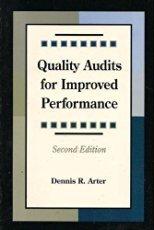

Margin Analysis Margin Analysis Being able to calculate a healthy Margin Analysis will help the Research & Development Department understand how to change the cost of material and the Production Department understand how to change the cost of labor. You will need: The Production Analysis report (page 4) of the Capstone Courier for Round 0 The Segment Analysis reports (pages 5-9) of the Capstone Courier for Round 0 Determining Current Margin Name Able Acre Adam Aft Agape Primary Segment Trad Low High Units Sold 999 1,763 366 358 314 Unit Inven Age Pfmn Size tory_Revision Date_Dec 31_MTBF_CoordCoord Price 189 11/21/2010 3.1 17500 5.5 14.5 $28.00 39 5/25/2009 4.6 14000 3.0 17.0 $21.00 40 4/18/2012 1.7 23000 8.0 12.0 $38.00 78 6/30/2011 25 25000 9.4 15.5 $33.00 62 5/25/2011 26 19000 4.0 11.0 $33.00 Material Cost $11.59 $7.81 $15.98 $15.87 $13.62 Labor Cost $749 $7.12 $8.57 $8.57 $8.57 Contr. Marg 29% 27% 33% 23% 30% 2nd Shift & Over time 0% 30% 0% 0% 0% Auto mation Next Round 4.0 5.0 3.0 3.0 3.0 Capacity Next Plant Round Utiliz 1.800 66% 1.400 129% 900 45% 600 73% 600 63% Pimn See The above product details are for example only. Your product names and data may differ, but the process to calculate margins is identical. Useful formulas Contribution Margin($) = Price -a (Material Cost + Labor Cost) Margin Percentage (%) = Contribution Margin/Price Calculating Margin Activity In the table below enter each product's price, material cost, and labor cost found in your report, and note whether or not a second shift was used (Y/N). Then, use the values you entered to calculate the Contribution Margin and the Margin Percentage. Incomplete Current Margin Price Material Cost Second Shift Labor Cost (Y/N) Contribution Margin ($) Contribution Margin (%) Product Name Traditional Baker Low End Bead High End Bid Performance Bold Size Buddy Determining Margin Potential Finding the maximum amount of profit you can generate from one unit of a product is called Margin Potential. This is useful for a company when making a decision about whether to go into production or not. In its simplest form, you can calculate Margin Potential as: Margin Potential = Maximum Price - Minimum Unit Costs Price Use the information table below to find the maximum price that customers deem acceptable. You can find this in the Customer Buying Criteria for each segment. Minimum Material Cost Minimum Labor Cost Calculate the minimum Material Cost per segment using the following Calculate the minimum Labor Cost for each segment. Assume a base equation and table below: labor cost of $11.20 ($11.20 is a rough estimate of labor cost used Minimum Material Cost = [(Lowest Acceptable MTBF*0.30)/1000] + solely to illustrate the Margin Potential Concept). Trailing Edge Position Cost Minimum Labor Cost = [511.20 - (1.12 * Automation Ratings Below)] + 1.12 Customer Segment Information Trailing Edge Material Cost Traditional $3.80 Low End $1.00 High End $6.00 Performance $4.50 Size $4.50 Leading Edge Material Cost $7.80 $5.00 $10.00 $8.50 $8.50 Lowest Acceptable MTBF 14,000 12,000 20,000 22,000 16,000 Maximum Price $30.00 $25.00 $40.00 $35.00 $35.00 Automation Level (out of 10) 8.0 10.0 5.0 6.0 6.0 Margin Potential Maximum Price Minimum Material Cost Minimum Labor Cost Contribution Margin ($) Contribution Margin (%) Product Traditional Name Baker Low End Bead High End Bid Performance Bold Size Buddy The Round 0 Capstone Courier Previous Next








